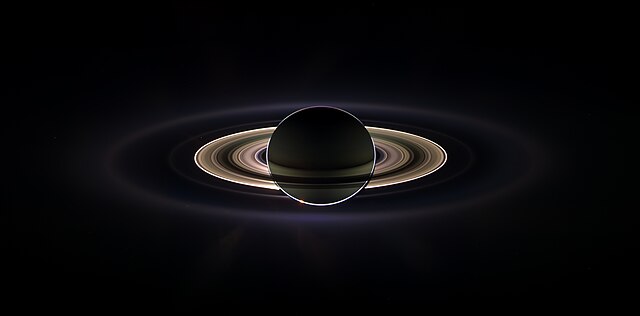Forward scattering is the deflection of waves by small angles so that they continue to move in close to the same direction as before the scattering. It can occur with all types of waves, for instance light, ultraviolet radiation, X-rays as well as matter waves such as electrons, neutrons and even water waves. It can be due to diffraction, refraction, and low angle reflection. It almost always occurs when the wavelength of the radiation used is small relative to the features which lead to the scattering. Forward scatter is essentially the reverse of backscatter.
Saturn eclipses the Sun, as seen from the Cassini space probe. The forward scattering of light makes the faint outer rings more visible.
Wave diffraction at the Blue Lagoon, Abereiddy
In physics, backscatter is the reflection of waves, particles, or signals back to the direction from which they came. It is usually a diffuse reflection due to scattering, as opposed to specular reflection as from a mirror, although specular backscattering can occur at normal incidence with a surface. Backscattering has important applications in astronomy, photography, and medical ultrasonography. The opposite effect is forward scatter, e.g. when a translucent material like a cloud diffuses sunlight, giving soft light.
Backscatter in photography, showing a Brocken spectre within the rings of a glory
Light from a smartphone flash reflecting sand particles.




